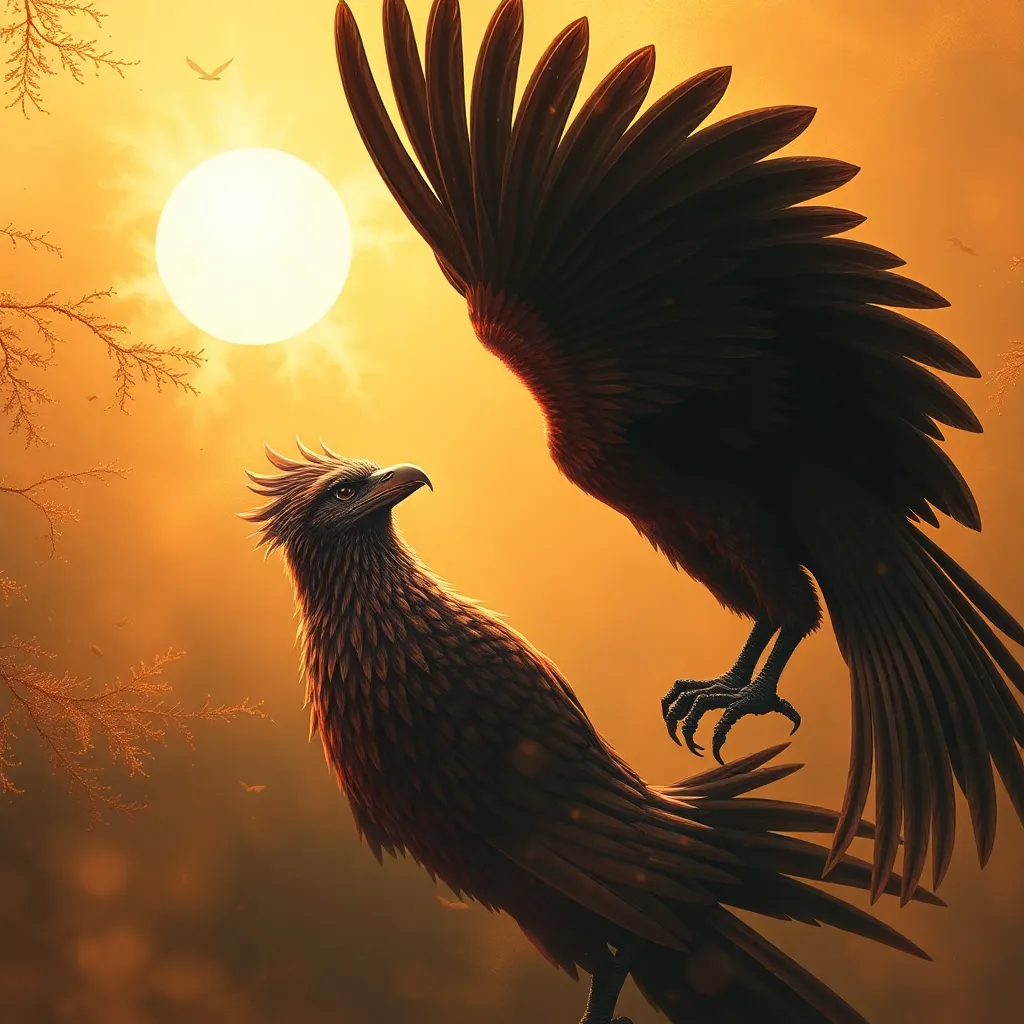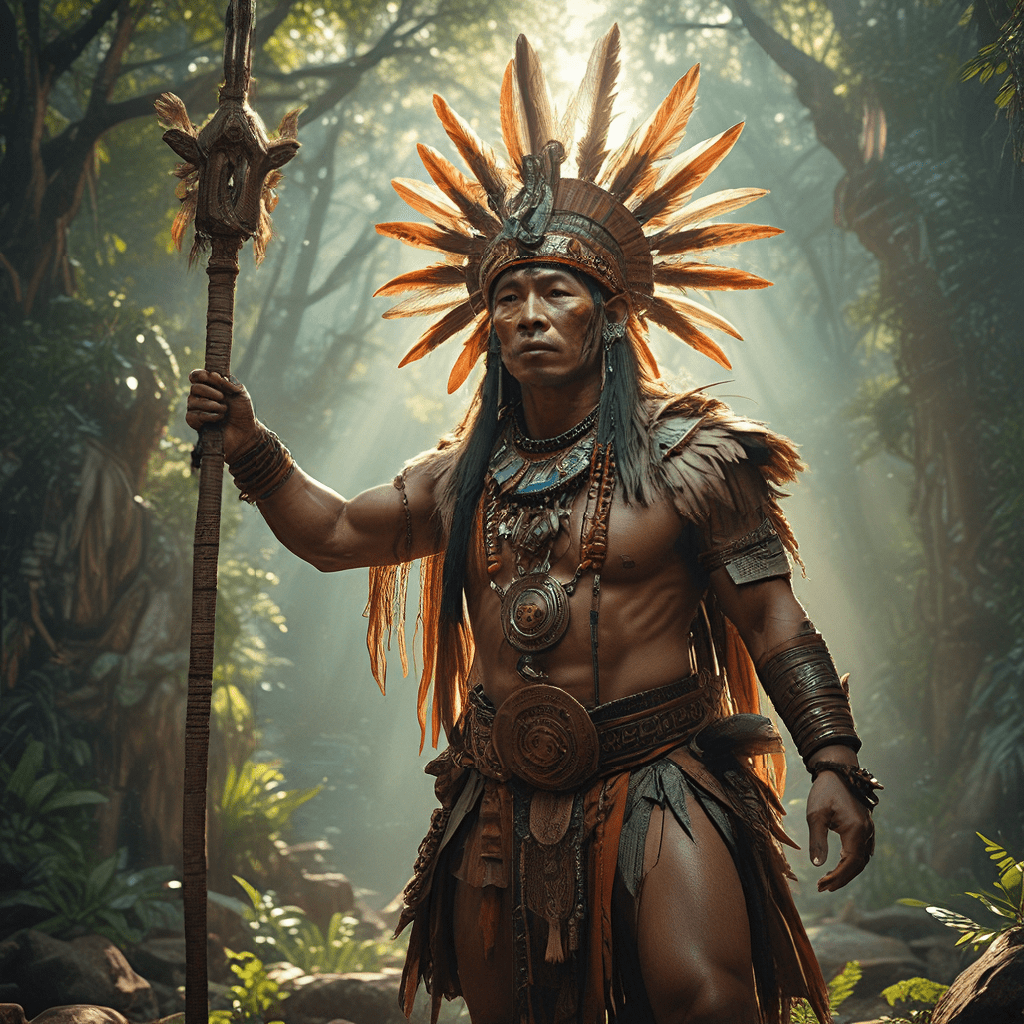The Garuda’s Song: Exploring the Bird-Man’s Presence in Music and Poetry
I. Introduction
Garuda, the magnificent bird-man of Hindu and Buddhist mythology, embodies a powerful symbol of strength, protection, and wisdom. This mythical creature, often depicted as a large bird or as a man with bird-like features, is revered in various cultures and narratives. The significance of Garuda transcends mere mythology; it has found its way into artistic expressions, particularly in music and poetry.
This article aims to explore the representation of Garuda in various forms of art, highlighting the profound connections between this mythological figure and the creative expressions of humanity. Through the lens of music and poetry, we will delve into how Garuda inspires artists across cultures, reflecting universal themes that resonate with audiences today.
II. The Mythological Origins of Garuda
Garuda’s origins stem from ancient Hindu and Buddhist texts, where he is described as the vehicle of Lord Vishnu and a formidable enemy of serpents. In the Mahabharata and Ramayana, Garuda’s character is not only central to the narratives but also rich in symbolism.
Some key attributes associated with Garuda include:
- Speed: Garuda is known for his incredible speed and agility, often depicted soaring through the skies.
- Strength: As a protector, Garuda possesses immense strength, capable of overcoming powerful adversaries.
- Wisdom: Garuda represents spiritual enlightenment and is often seen as a guide for seekers of truth.
In his role as a protector, Garuda defends dharma (cosmic order) and serves as a divine vehicle that facilitates the journey of souls toward liberation.
III. Garuda in Traditional Music
Garuda’s presence in traditional music is profound and varied, reflecting cultural contexts where the mythological bird-man is celebrated. Across Southeast Asia, particularly in Indonesia and Thailand, Garuda features prominently in folk songs, ceremonial music, and dance.
Examples of traditional songs include:
- Garuda Pancasila: An Indonesian national anthem that emphasizes the values of nationalism and unity, featuring Garuda as a symbol of strength.
- Balinese Gamelan: In Bali, traditional gamelan music often incorporates themes of Garuda, using specific instruments like the metallophones and drums to evoke his essence.
The musical styles vary, but they often share common elements such as rhythmic complexity and melodic motifs that represent Garuda’s soaring flight, creating a soundscape that evokes feelings of freedom and power.
IV. The Representation of Garuda in Poetry
Throughout history, poets have drawn inspiration from Garuda, weaving his imagery into their works. In ancient texts, Garuda is depicted as a symbol of freedom and spiritual ascent. Notable poets like Kalidasa and Jayadeva have referenced Garuda, illustrating themes of divine love and liberation.
Common themes in Garuda-inspired poetry include:
- Freedom: Garuda embodies the spirit of liberation, often symbolizing the search for spiritual enlightenment.
- Power: The imagery of Garuda conveys strength and the ability to overcome obstacles.
- Spirituality: Many poems explore the connection between Garuda and the divine, reflecting the quest for higher consciousness.
In contemporary poetry, modern interpretations of Garuda emerge, blending traditional motifs with current themes, allowing poets to explore new dimensions of his symbolism.
V. Cross-Cultural Perspectives on Garuda
Garuda’s influence extends beyond Hinduism and Buddhism, with interpretations in various cultures. In Southeast Asian nations, Garuda is often associated with national identity and pride, appearing in emblems and folklore.
Comparing musical and poetic representations across cultures reveals:
- Shared Themes: Freedom, strength, and protection are universal themes that emerge in different cultural contexts.
- Diverse Interpretations: While the core symbolism remains, regional variations highlight unique cultural narratives surrounding Garuda.
This cross-cultural exploration underscores Garuda’s universal appeal, illustrating how his mythology resonates with diverse audiences worldwide.
VI. The Artistic Influence of Garuda Today
In contemporary art, musicians and poets continue to draw inspiration from Garuda, reinterpreting his imagery in innovative ways. Globalization has facilitated the exchange of artistic ideas, allowing for a fusion of traditional and modern styles.
Recent works influenced by Garuda include:
- Music Albums: Artists are incorporating Garuda’s symbolism into their lyrics and compositions, creating a blend of traditional and contemporary sounds.
- Poetry Collections: Modern poets explore Garuda’s themes through diverse forms, from spoken word to experimental poetry, resonating with today’s societal issues.
This artistic evolution reflects the dynamic nature of Garuda’s imagery, demonstrating its relevance in a rapidly changing world.
VII. The Significance of Garuda in Modern Contexts
In today’s world, Garuda stands as a symbol of resilience and hope. His imagery resonates with those seeking strength in adversity, embodying the spirit of overcoming challenges.
The role of art in preserving and evolving the narrative of Garuda is significant. Through music and poetry, artists continue to share his story, ensuring that his legacy endures.
Garuda’s message has the potential to resonate with current global issues, such as:
- Environmentalism: As a creature of the skies, Garuda can symbolize the importance of protecting our planet.
- Social Justice: His role as a protector aligns with movements advocating for justice and equality.
Thus, Garuda serves not only as a mythological figure but also as a beacon of hope and inspiration for contemporary society.
VIII. Conclusion
In conclusion, Garuda’s multifaceted presence in music and poetry reveals a rich tapestry of artistic expression that spans cultures and eras. The enduring legacy of Garuda is a testament to the power of myth to inspire creativity and convey universal themes.
As we explore and engage with works inspired by Garuda, we are reminded of the strength, freedom, and spiritual depth that this magnificent figure represents. We invite readers to delve into the artistic interpretations of Garuda, discovering the profound connections between mythology and human creativity.



